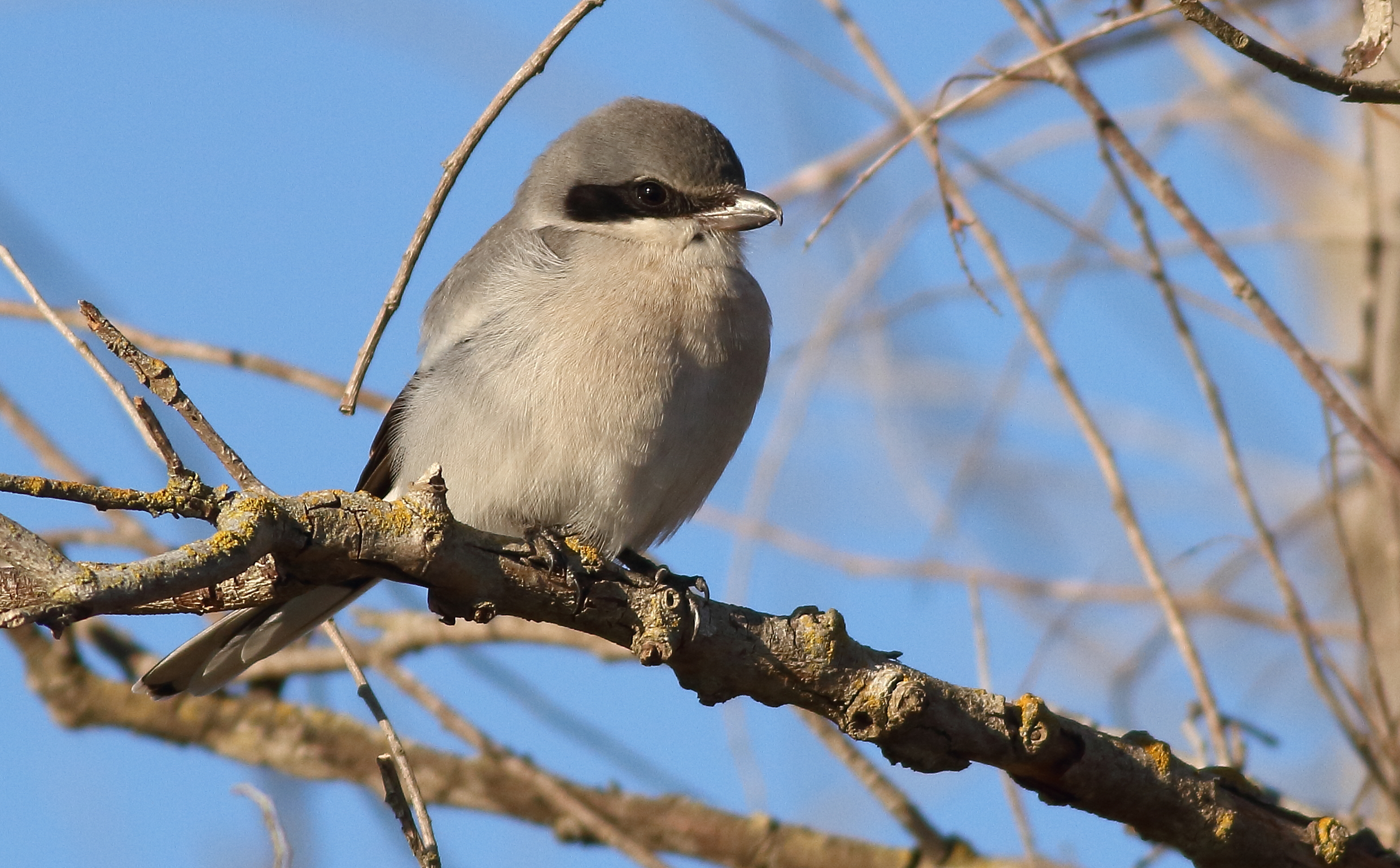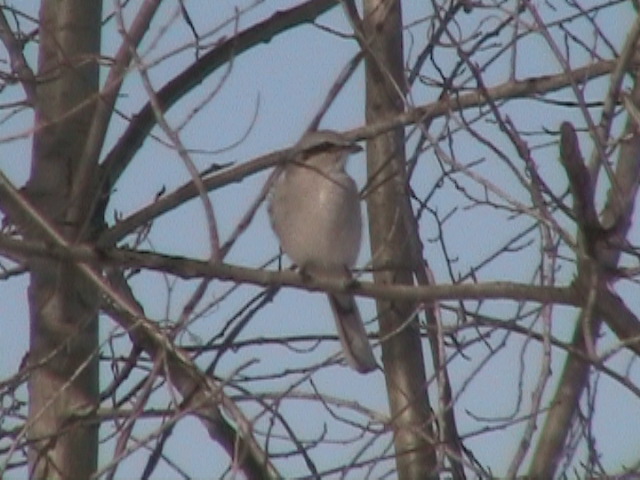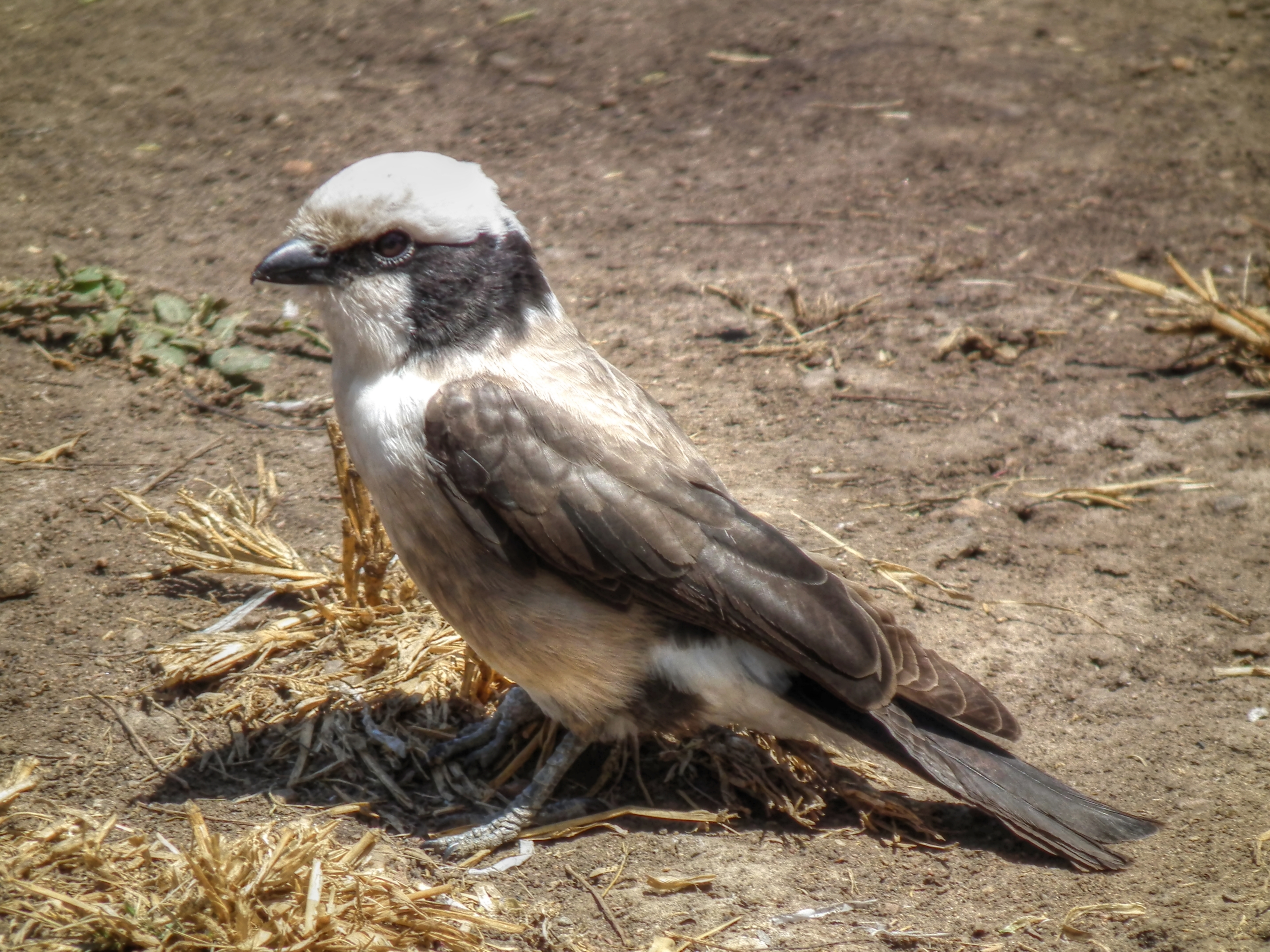|
Shrikes
Shrikes () are passerine birds of the family Laniidae. The family is composed of 34 species in four genera. The family name, and that of the largest genus, ''Lanius'', is derived from the Latin word for "butcher", and some shrikes are also known as butcherbirds because of their feeding habits. The common English name shrike is from Old English , alluding to the shrike's shriek-like call. Distribution, migration, and habitat Most shrike species have a Eurasian and African distribution, with just two breeding in North America (the loggerhead and northern shrikes). No members of this family occur in South America or Australia, although one species reaches New Guinea. The shrikes vary in the extent of their ranges, with some species, such as the great grey shrike, ranging across the Northern Hemisphere; to the Newton's fiscal, which is restricted to the island of São Tomé. They inhabit open habitats, especially steppe and savannah. A few species of shrikes are forest dwell ... [...More Info...] [...Related Items...] OR: [Wikipedia] [Google] [Baidu] |
Loggerhead Shrike
The loggerhead shrike (''Lanius ludovicianus'') is a passerine bird in the family Laniidae. It is the only member of the shrike family endemic to North America; the related northern shrike (''L. borealis'') occurs north of its range, however it is also found in Siberia. It is nicknamed the butcherbird after its carnivorous tendencies, as it consumes prey such as amphibians, insects, lizards, small mammals and small birds, and some prey end up displayed and stored at a site, for example in a tree. Due to its small size and weak talons, this predatory bird relies on impaling its prey upon thorns or barbed wire for facilitated consumption. The numbers of loggerhead shrike have significantly decreased in recent years, especially in Midwestern, New England and Mid-Atlantic areas. Taxonomy In 1760 the French zoologist Mathurin Jacques Brisson included a description of the loggerhead shrike in his ''Ornithologie'' based on a specimen collected in Louisiana in the United States. He used ... [...More Info...] [...Related Items...] OR: [Wikipedia] [Google] [Baidu] |
Loggerhead Shrike
The loggerhead shrike (''Lanius ludovicianus'') is a passerine bird in the family Laniidae. It is the only member of the shrike family endemic to North America; the related northern shrike (''L. borealis'') occurs north of its range, however it is also found in Siberia. It is nicknamed the butcherbird after its carnivorous tendencies, as it consumes prey such as amphibians, insects, lizards, small mammals and small birds, and some prey end up displayed and stored at a site, for example in a tree. Due to its small size and weak talons, this predatory bird relies on impaling its prey upon thorns or barbed wire for facilitated consumption. The numbers of loggerhead shrike have significantly decreased in recent years, especially in Midwestern, New England and Mid-Atlantic areas. Taxonomy In 1760 the French zoologist Mathurin Jacques Brisson included a description of the loggerhead shrike in his ''Ornithologie'' based on a specimen collected in Louisiana in the United States. He used ... [...More Info...] [...Related Items...] OR: [Wikipedia] [Google] [Baidu] |
Great Grey Shrike
The great grey shrike (''Lanius excubitor'') is a large and predatory songbird species in the shrike family (Laniidae). It forms a superspecies with its parapatric southern relatives, the Iberian grey shrike (''L. meridionalis''), the Chinese grey shrike (''L. sphenocerus'') and the American loggerhead shrike (''L. ludovicianus''). Males and females are similar in plumage, pearly grey above with a black eye-mask and white underparts. Breeding takes place generally north of 50° northern latitude in northern Europe and Asia. Most populations migrate south in winter to temperate regions.Harris & Franklin (2000): pp. 152–153 The great grey shrike is carnivorous, with rodents making up over half its diet. Taxonomy and systematics The species was first scientifically described by Carl Linnaeus in his 1758 edition of ''Systema Naturae'' under the current binomial name. His description is – "a shrike with a wedge-shaped white-bordered tail, back grey, wings black with white ... [...More Info...] [...Related Items...] OR: [Wikipedia] [Google] [Baidu] |
Northern Shrike
The northern shrike (''Lanius borealis'') is a large songbird species in the shrike family ( Laniidae) native to North America and Siberia. Long considered a subspecies of the great grey shrike, it was classified as a distinct species in 2017. Six subspecies are recognised. Taxonomy The northern shrike was formally described by the French ornithologist Louis Jean Pierre Vieillot in 1808 under its present binomial name ''Lanius borealis''. In the 19th century, North American ornithologists considered it as a separate species from the great grey shrike, while European authorities held them to be the same species. American ornithologist Alden H. Miller investigated differences between the Siberian and Alaskan populations in 1930 and could find no consistent differences, hence he recommended combining the two into ''Lanius excubitor''. In North America, this and the related loggerhead shrike are commonly known as butcherbirds for their habit of impaling prey on thorns or spikes. A f ... [...More Info...] [...Related Items...] OR: [Wikipedia] [Google] [Baidu] |
Lanius
''Lanius'', the typical shrikes, are a genus of passerine birds in the shrike family Laniidae. The majority of the family's species are placed in this genus. The genus name, ''Lanius'', is derived from the Latin word for "butcher", and some shrikes are also known as "butcher birds" because of their feeding habits. The common English name "shrike" is from Old English ''scríc'', "shriek", referring to the shrill call. African species are known as fiscals. That name comes from the Afrikaans word ''fiskaal'' ("public official", especially a hangman), because they hang their prey on thorns for storage. Most ''Lanius'' species occur in Eurasia and Africa, but the great grey shrike has a circumpolar distribution, and the loggerhead shrike is confined to North America. There are no members of this genus or the shrike family in South America or Australia. ''Lanius'' shrikes are birds of open habitats typically seen perched upright on a prominent perch like a treetop or a ... [...More Info...] [...Related Items...] OR: [Wikipedia] [Google] [Baidu] |
Eurocephalus
''Eurocephalus'' is a small genus of passerine birds in the shrike family. Just two species are placed in this genus. Extant Species These are large brown and white shrikes found in sub-Saharan Africa. They are gregarious species, unlike the ''Lanius ''Lanius'', the typical shrikes, are a genus of passerine birds in the shrike family Laniidae. The majority of the family's species are placed in this genus. The genus name, ''Lanius'', is derived from the Latin word for "butcher", and some ...'' shrikes, and have a parrot-like flight. ''Eurocephalus'' shrikes are birds of savanna and open woodland habitats, typically seen perched upright on a prominent thornbush perch. These species primarily take large insects, but will occasionally eat fruit which has fallen to the ground. The male and female are similar in plumage in both species but are distinguishable from immature birds. References * Tony Harris and Kim Franklin, ''Shrikes and Bush-Shrikes'' Shrikes B ... [...More Info...] [...Related Items...] OR: [Wikipedia] [Google] [Baidu] |
Cache (biology)
Hoarding or caching in animal behavior is the storage of food in locations hidden from the sight of both conspecifics (animals of the same or closely related species) and members of other species. Most commonly, the function of hoarding or caching is to store food in times of surplus for times when food is less plentiful. However, there is evidence that some amount of caching or hoarding is done in order to ripen the food, called ripening caching. The term hoarding is most typically used for rodents, whereas caching is more commonly used in reference to birds, but the behaviors in both animal groups are quite similar. Hoarding is done either on a long-term basis – cached on a seasonal cycle, with food to be consumed months down the line – or on a short-term basis, in which case the food will be consumed over a period of one or several days. Some common animals that cache their food are rodents such as hamsters and squirrels, and many different bird species, such as rooks a ... [...More Info...] [...Related Items...] OR: [Wikipedia] [Google] [Baidu] |
Urolestes
The magpie shrike (''Urolestes melanoleucus''), also known as the African long-tailed shrike, is a species of bird in the family Laniidae. It is monotypic within the genus ''Urolestes''. It is native to the grasslands of eastern and southeastern Africa, where its natural habitats are dry savannah, moist savannah, and subtropical or tropical dry shrubland. It has a very wide range and is common in places, and the International Union for Conservation of Nature has assessed its conservation status as being of "least concern". Distribution and habitat The magpie shrike is found in Angola, Botswana, Eswatini, Kenya, Mozambique, Namibia, South Africa, Tanzania, Zambia, and Zimbabwe. It inhabits open savannah with scattered acacia trees, close-grazed turf and bare ground, in parts of southern and central Africa where precipitation mainly occurs between November and April. Arid areas are avoided but semi-arid areas may be favoured. It also occurs in woodland, particularly riparian areas ... [...More Info...] [...Related Items...] OR: [Wikipedia] [Google] [Baidu] |
Handbook Of The Birds Of The World
The ''Handbook of the Birds of the World'' (HBW) is a multi-volume series produced by the Spanish publishing house Lynx Edicions in partnership with BirdLife International. It is the first handbook to cover every known living species of bird. The series was edited by Josep del Hoyo, Andrew Elliott, Jordi Sargatal and David A. Christie. All 16 volumes have been published. For the first time an animal class will have all the species illustrated and treated in detail in a single work. This has not been done before for any other group in the animal kingdom. Material in each volume is grouped first by family, with an introductory article on each family; this is followed by individual species accounts (taxonomy, subspecies and distribution, descriptive notes, habitat, food and feeding, breeding, movements, status and conservation, bibliography). In addition, all volumes except the first and second contain an essay on a particular ornithological theme. More than 200 renowned spec ... [...More Info...] [...Related Items...] OR: [Wikipedia] [Google] [Baidu] |
Bird Of Prey
Birds of prey or predatory birds, also known as raptors, are hypercarnivorous bird species that actively hunt and feed on other vertebrates (mainly mammals, reptiles and other smaller birds). In addition to speed and strength, these predators have keen eyesight for detecting prey from a distance or during flight, strong feet with sharp talons for grasping or killing prey, and powerful, curved beaks for tearing off flesh. Although predatory birds primarily hunt live prey, many species (such as fish eagles, vultures and condors) also scavenge and eat carrion. Although the term "bird of prey" could theoretically be taken to include all birds that actively hunt and eat other animals, ornithologists typically use the narrower definition followed in this page, excluding both piscivorous predators such as storks, herons, gulls, skuas, penguins and kingfishers, as well as primarily insectivorous birds such as passerine birds (e.g. shrikes) and birds like nightjars and frog ... [...More Info...] [...Related Items...] OR: [Wikipedia] [Google] [Baidu] |
Vertebrate
Vertebrates () comprise all animal taxa within the subphylum Vertebrata () (chordates with backbones), including all mammals, birds, reptiles, amphibians, and fish. Vertebrates represent the overwhelming majority of the phylum Chordata, with currently about 69,963 species described. Vertebrates comprise such groups as the following: * jawless fish, which include hagfish and lampreys * jawed vertebrates, which include: ** cartilaginous fish (sharks, rays, and ratfish) ** bony vertebrates, which include: *** ray-fins (the majority of living bony fish) *** lobe-fins, which include: **** coelacanths and lungfish **** tetrapods (limbed vertebrates) Extant vertebrates range in size from the frog species ''Paedophryne amauensis'', at as little as , to the blue whale, at up to . Vertebrates make up less than five percent of all described animal species; the rest are invertebrates, which lack vertebral columns. The vertebrates traditionally include the hagfish, which do not have ... [...More Info...] [...Related Items...] OR: [Wikipedia] [Google] [Baidu] |



.jpg)

%2C_Hindhede_Nature_Park%2C_Singapore_-_20060921.jpg)



